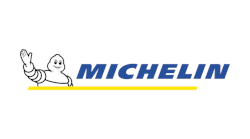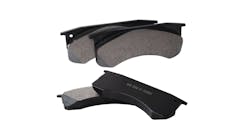Philosophically speaking, all tires are relatively the same.
"That said, tires are constructed differently depending on the challenges presented by the application," says Tim Phillips, vice president of marketing and operations for Double Coin and CMA (doublecointires.com), a tire manufacturer and marketer. "That's why it is critical to determine the exact application your trailer will perform, and match that up with specific tire products and features best-suited to handle those needs."
It's also important to give trailer tires their due attention with respect to maintenance. In looking specifically at semitrailer tires, that's not always the case. Evan Perrow, senior product marketing manager at Goodyear Tire & Rubber, explains why.
One reason is that most semitrailers are not permanently matched with specific tractors.
"This can create an atmosphere in which fleets and drivers don’t pay as much attention to trailer tires as they would to drive or steer tires," Perrow says.
Goodyear Tire & Rubber (goodyear.com) develops, manufactures, markets and distributes tires.
Second, semitrailer tires located on the inside of dual wheel assemblies are harder to access. Third, steer and drive tires are generally more expensive. Because of price considerations, some view trailer tires as less important in terms of investment.
"But trailer tires are every bit as important as their steer and drive axle counterparts," Perrow says.
"Trailer tires are the most neglected wheel position," says Tom Clauer, manager of commercial and OTR planning at Yokohama Tire Corporation. "Segments that are especially overlooked are the container chassis and the drop-and-hook. Tires in these two segments may not see the fleet’s yard for extended periods. Preventive maintenance, therefore, is scarce and usually done only when a breakdown occurs."
Yokohama Tire Corporation (yokohamatire.com) is the North American manufacturing and marketing arm of The Yokohama Rubber Co., Ltd., a global tire manufacturer and seller.
Regardless of how diligently preventive maintenance is practiced, fleets want trailer tires that provide long, even wear and deliver a cost-efficient solution for a variety of trailer applications.
"Fuel efficiency is also very important, so fleets seek low rolling resistance in their tire choices," says Sharon Cowart, director of product marketing at Michelin Americas Truck Tires. "Fleets also want tires with a durable casing because the trailer position is retreaded more than any other wheel position."
Michelin Americas Truck Tires (michelintruck.com) designs, manufactures and sells tires.
Understanding trailer tire differences
Selecting the best trailer tire starts by looking at the tire size you currently have on the trailer equipment, Michelin’s Cowart says. Then you can explore other features that separate one tire from the next.
"This might entail specific load-carrying requirements, weather conditions or environmental issues such as SmartWay-verified tires," Cowart says. The EPA's SmartWay Verification Program evaluates the ability of LRR (low rolling resistance) tires to reduce resistance and improve fuel economy for Class 8 tractor-trailers.
"Also, a steel-belted tire will hold up better for heavy loads than a nylon- or fabric-belted tire," Cowart adds.
Another consideration is ST versus LT.
"ST stands for specialty trailer," Double Coin’s Phillips says. "These tires are designed for trailer axle use only. They are designed to carry heavier loads than a P (passenger) or LT (light truck) tire... The design tends to be more complex because LT tires not only work on trailers, but also on passenger and light-truck vehicles."
"Truck tires (LT) typically have a lot more tread than you need on a towed vehicle," Cowart adds.
It's also important to consider your application when selecting a tire. Like steer and drive tires, trailer tires can differ in construction, compounding, tread design and other features.
"There are major differences from one trailer application to the next," says Gary Schroeder, director of Cooper Tire & Rubber Company's truck and bus tire business. "In long-haul applications such as dry van and refrigerated van, many fleets would prefer a 12/32 tire designed for highway use and fuel efficiency, typically designated as SmartWay-verified.
Cooper Tire & Rubber Company (us.coopertire.com) is an American company that designs, manufactures, markets and sells automobile and truck tires.
"Regional-haul trailers include applications such as flatbeds, drop decks and tankers," Schroeder continues. "These applications are demanding on tires and involve more starts, stops and turns. The sidewall and tread should be optimized to handle curb impact, scrubbing, cuts and chips, and protect against stone retention in the grooves."
"A standard box trailer traveling long distances will want a shallower-depth tire that delivers better rolling resistance and fuel economy," Phillips points out. "The same trailer being used to make local deliveries in urban areas will want more tread depth and sidewall protection to guard against punctures and curb damage."
Refrigerated trailers have many of the same needs as box trailers, so many of the same tire considerations apply. With flatbed and tanker trailers, on the other hand, there is more to consider.
Flatbed trailer tires, Phillips says, typically have unique shoulder designs or other features to handle the stresses associated with lateral drag, since those tires get pulled as the trailer turns.
Tanker trailers can be baffled or unbaffled, which means the load is constantly shifting as the vehicle moves.
"This presents challenges for a tire to wear evenly under ever-changing conditions," Phillips says.
It is important to note that there are always tradeoffs when considering tire attributes.
"There is no tire that can give the maximum benefit in all categories," says Sanjay Nayakwadi, director of product strategy at Bridgestone Americas Tire Operations. "For example, designing a tire for low rolling resistance will most likely have a tradeoff in wear. At Bridgestone, we are aware of these tradeoffs and design tires which give the best overall lifecycle cost."
Bridgestone Americas Tire Operations (bridgestone.com) is a business unit of Bridgestone Americas, Inc., whose parent company, Bridgestone Corporation, is the world's largest tire and rubber company.
On the topic of overall lifecycle cost, Cowart brings up one other overarching consideration.
"For more localized operations, more focus is typically placed on lowering cost per mile,” Cowart says. “Additional goals may be to maximize the overall life of the tire as an asset, which looks at the value of the casing for retreadability."
Fleets can find substantial cost savings by retreading casings in the trailer position, according to Nayakwadi.
"Many premium commercial tires, such as Bridgestone, can be safely retreaded more than once with proper maintenance and inspection," he adds. "Case in point, one of the most cost-efficient Bandag customers, which is also one of the largest fleets in the world, retreads tires more than twice on average, delivering lower cost per mile than new tires and subsequently lowering their total cost of ownership."
Bandag (bandag.com) is a retreaded tire manufacturer owned by Bridgestone Americas.
In other words, there are many options to consider when choosing semitrailer tires. Perrow strongly recommends working with an authorized tire dealer or service center to sort it all out.
Recognizing tire wear
Regular visual inspections provide a lot of information about a tire’s condition and the level of maintenance it has received. You can also identify other mechanical issues that are contributing to premature tire wear.
"Walk-around inspections that include the tires and not just the lights need to be reinforced anytime a driver backs under a kingpin," Yokohama’s Clauer says. "The inspection does not have to be intense to save significantly in downtime and replacement cost. Take a look at the tread for damage or visible foreign objects. Look at the sidewalls for curb scraping or impact damage. Bulges indicate broken casing cables. Look for discoloration and signs of low air-pressure or overloading."
"When examining a tire, make note of unusual wear patterns like feathering or cupping," Goodyear’s Perrow says. "We also recommend running your hand over the tread area and feeling for abnormalities like cuts and cracks. If you have questions about a tire’s condition, don’t hesitate to contact your nearest authorized dealer or tire service center."
There are other resources to help fleet managers diagnose the cause of tire wear.
"My favorite is the TMC Radial Tire Conditions Analysis Guide (from the Technology & Maintenance Council of the American Trucking Associations)," Double Coin’s Phillips says. "Once a manager gains an understanding of the different types of wear, it becomes easier to decide whether the cause is most likely mechanical or tire-related."
According to Michelin's Cowart, trailer tires may provide visual clues that there is an issue with trailer suspension, shock absorbers, worn bushings, loose U-bolts, locked brakes and other problems.
"Tires will present signs of uneven wear including dog tracking, cupping, flat spotting and camber," Cowart says.
Just because a tire develops some irregular wear does not mean it has to be removed from service.
"If irregular wear is caught early enough, the tire can be rotated or turned on the wheel to help smooth the wear over time," Phillips says.
On the other hand, Phillips adds, if the irregular wear is so bad that it causes the trailer to walk on the driver or track away from the tractor, the tire should be removed. Also, if a tire has any visible damage with exposed steel or is simply deemed unsafe, it should be removed from service.
"According to U.S. Department of Transportation (DOT) regulations, tread depth for any tire on the front axle of a truck must be at least 4/32 when measured at any point on a major tread groove," Cooper’s Schroeder says. "All other tires on the vehicle are required to have a tread depth of at least 2/32. The tire should be removed from service immediately if any measurements are at or below these depth requirements in any part of the tread."
Preventive maintenance tips
Yokohama’s Clauer says simple measures can be taken that will greatly reduce trailer tire failure rate. Like a tractor, trailers should go through a scheduled maintenance check. Keep a close eye on the following:
- Worn-out brakes - could cause road skidding and flat spots on the tire
- Suspension parts wear - alignments go out of spec and can cause rapid tire wear
- Wheel bearing wear - bearings loosen and generate irreversible wear patterns on tires
"All of these issues are normally discovered after something breaks and it's too late," Clauer adds. "A small bit of fleet maintenance attention will pay off tremendously."
Irregular tire wear will also develop if tires are not mounted properly and uniformly.
"Bent wheels, improper mounting or flat spotting can cause excessive runout," Michelin's Cowart says. Alignment is another important consideration.
Maintaining correct inflation pressure is one of the most effective tire care practices.
"Consistent, correct inflation can positively impact tire wear, casing life and a tire’s overall performance," Goodyear’s Perrow says. "It can also help reduce the amount of fuel used, and even contribute to a more comfortable ride. The benefits of checking and adjusting (if necessary) tire air pressure levels more than make up for the time and effort required."
Perrow recommends checking tire inflation levels at least weekly. Working with an authorized tire dealer or service center to develop an overall tire maintenance strategy is also advised.
"Drivers should conduct pre-trip inspections, which include a visual inspection and air pressure check, every day when the tires are cold," Double Coin’s Phillips says. "Tires that are over- or underinflated need to be corrected to the proper operating pressure for the trailer. Trailers should also be part of a fleet's regular preventive maintenance schedule to ensure that the wearable components of the trailer are in good condition."
Cooper’s Schroeder says underinflation can cause excessive heat buildup, which could result in internal structural damage. On the other hand, overinflation makes tires more vulnerable to cutting, punctures or damage from sudden impacts.
"When tires are not contacting the road properly, the tread area will wear irregularly and more rapidly," Schroeder adds. "Correct inflation pressure is determined by the load carried for each tire."
Like any other position tire, Phillips says the best way to ensure that proper air pressures are being used is to scale the vehicle by axle when loaded.
"Once you have those measurements, consult any manufacturer's data book to find an air pressure table, and simply match up the load with recommended psi," Phillips says.
An automatic tire pressure monitoring system (TPMS) can help you monitor trailer tires.
"A TPMS takes the human element out of air pressure maintenance," Phillips says. "Just make sure the system is capable of not just inflating a tire when it is low, but also deflating or bleeding out excess air when a tire becomes overinflated."
You can also seek guidance from experts trained by the Tire Industry Association (TIA).
"TIA-trained technicians can help fleets identify and proactively manage these issues through their tire assessment program," Bridgestone’s Nayakwadi says. "In this inspection, a trained technician will check tread depth and tire inflation pressure at every wheel position to identify problems, and then work with the fleet to make necessary adjustments to maximize tire service life."





